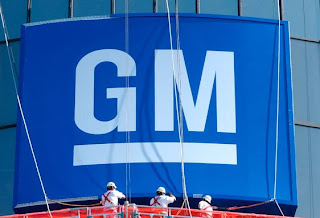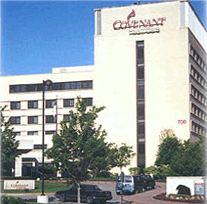The Wall Street Journal
As General Motors Co. plans its initial public offering for next month, and readies its "road show" for the sale next week, some bankers and analysts say the shares could reach a high enough price for the U.S. to come close to breaking even on its 2009 bailout of the car maker.
But there's one big caveat: The stock would have to remain at that price over the many months or perhaps years it will take the government to sell its GM majority stake.
The U.S. Treasury is under pressure from banks underwriting the deal to maximize the number of shares it sells in the IPO, which is expected to take place about Nov. 18, said people familiar with the situation. The banks want to make sure there are enough shares to meet investor demand.
The Treasury is seeking to sell roughly $6 billion to $8 billion of its GM stock through the IPO, with other sellers taking the entire deal to a total of roughly $10 billion to $12 billion.
The government paid $40 billion for its stake, and risks political fallout if the share price sinks due to releasing too many shares at once on the market. That could send a signal the Obama administration won't recoup its investment.
While estimates of GM's stock valuation vary widely, one analyst at a research firm focusing on distressed companies said GM has a current implied market value of about $70 billion.
That calculation by Kirk Ludtke of CRT Capital Group LLC in Stamford, Conn., indicates a value for the U.S. stake of $35 billion, roughly $5 billion short of what the Treasury still has invested in the Detroit auto maker.
Mr. Ludkte said his measurement is based on the current trading price of GM's public debt. He thinks GM's market value could even top $82 billion six months after the IPO—potentially enough for the government to show a small profit.
The CRT calculation is in line with what some others are saying. Two bankers close to the IPO estimate the market value could be $60 billion to $70 billion.
Linda Killian, a principal of Renaissance Capital LLC in Greenwich, Conn., which specializes in IPO research, estimates GM's valuation at $50 billion to $70 billion, yet added that the chances of the government breaking even are "low."
Because the IPO should take place at a discount to the market price, the government is likely to show a big loss in realized proceeds on its sales on IPO day.
If the IPO is priced at the $50 billion level, that would equate to a U.S. loss of approximately 38% on the first batch of shares it sells.
Also, because there will be so much GM stock still to be sold even after the IPO, that will weigh on its valuation, Ms. Killian said. "Potential buyers are going to take that into consideration," she said.
Former investment banker and ex-White House auto czar Steven Rattner said Wednesday that any losses the U.S. will sustain from its investment "will be single digit" billions.
GM plans to launch its road show presentations to institutional investors for the IPO shortly after Election Day next Tuesday, in hopes of pricing and selling the shares shortly before Thanksgiving.
As part of the road show, GM Chief Executive Daniel Akerson, who took his post Sept. 1, will lead two teams of senior executives who will try to persuade investors to buy the stock, said people familiar with the matter.
One team will include GM Vice Chairman Steve Girsky, finance Vice President Dan Ammann and North America President Mark Reuss.
The other will include Chief Financial Officer Chris Liddell, manufacturing chief Tim Lee and product chief Tom Stephens. Mr. Akerson will trade off between the groups.
Stops are planned at about 10 cities in the U.S., Canada and Europe, but not Asia, said the people familiar with the plans.
Mr. Akerson and Mr. Girsky already have made trips to Asia and the Middle East in order to talk to investors and money managers.
Some money managers say they would be leery of GM stock at the price levels being discussed.
"Would I jump at the GM deal? Probably not," said Jack Ablin, chief investment officer of Harris Private Bank in Chicago. He said the "overhang of government ownership" results in a "management straitjacket" that could require GM executives to "get permission every time they want to extend a bonus to somebody."
Robert Pavlik, a senior partner at investment advisers Banyan Partners LLC in Palm Beach Gardens, Fla., said he "wouldn't put my clients' money into it" because GM still carries the "stigma" of both bankruptcy and government ownership as well as recent top-management turnover.
"What's going to drive their sales? The Chevrolet Volt? I think that's going to turn out to be more of a publicity stunt than anything else," Mr. Pavlik said.
The stock valuations some on Wall Street are placing on GM mean it could be worth more than its more successful rival Ford Motor Co., which avoided bankruptcy and has a $48 billion market capitalization.
Mr. Ludtke, the CRT analyst, explained the seeming disparity by saying GM has higher sales, a stronger balance sheet and "a much stronger position in the emerging markets" such as China than Ford.
He estimated GM's 2010 sales will be $128 billion while Ford's will be $108 billion.
GM also was able to slash its debt via its 2009 bankruptcy to $8 billion from $46 billion in 2008. With $33 billion of cash on hand at midyear, GM had net cash (factoring in debt) of $25 billion.
By comparison, Ford at midyear had $22 billion of cash but $30 billion of debt, so it had net debt of $8 billion. (Ford said Wednesday its debt had fallen to $26.4 billion as of Sept. 30.)
A report by Moody's Investors Service indicates that Ford and GM have roughly comparable debt positions, when leases and pensions are taken into account.
But there's one big caveat: The stock would have to remain at that price over the many months or perhaps years it will take the government to sell its GM majority stake.
The U.S. Treasury is under pressure from banks underwriting the deal to maximize the number of shares it sells in the IPO, which is expected to take place about Nov. 18, said people familiar with the situation. The banks want to make sure there are enough shares to meet investor demand.
The Treasury is seeking to sell roughly $6 billion to $8 billion of its GM stock through the IPO, with other sellers taking the entire deal to a total of roughly $10 billion to $12 billion.
The government paid $40 billion for its stake, and risks political fallout if the share price sinks due to releasing too many shares at once on the market. That could send a signal the Obama administration won't recoup its investment.
While estimates of GM's stock valuation vary widely, one analyst at a research firm focusing on distressed companies said GM has a current implied market value of about $70 billion.
That calculation by Kirk Ludtke of CRT Capital Group LLC in Stamford, Conn., indicates a value for the U.S. stake of $35 billion, roughly $5 billion short of what the Treasury still has invested in the Detroit auto maker.
Mr. Ludkte said his measurement is based on the current trading price of GM's public debt. He thinks GM's market value could even top $82 billion six months after the IPO—potentially enough for the government to show a small profit.
The CRT calculation is in line with what some others are saying. Two bankers close to the IPO estimate the market value could be $60 billion to $70 billion.
Linda Killian, a principal of Renaissance Capital LLC in Greenwich, Conn., which specializes in IPO research, estimates GM's valuation at $50 billion to $70 billion, yet added that the chances of the government breaking even are "low."
Because the IPO should take place at a discount to the market price, the government is likely to show a big loss in realized proceeds on its sales on IPO day.
If the IPO is priced at the $50 billion level, that would equate to a U.S. loss of approximately 38% on the first batch of shares it sells.
Also, because there will be so much GM stock still to be sold even after the IPO, that will weigh on its valuation, Ms. Killian said. "Potential buyers are going to take that into consideration," she said.
Former investment banker and ex-White House auto czar Steven Rattner said Wednesday that any losses the U.S. will sustain from its investment "will be single digit" billions.
GM plans to launch its road show presentations to institutional investors for the IPO shortly after Election Day next Tuesday, in hopes of pricing and selling the shares shortly before Thanksgiving.
As part of the road show, GM Chief Executive Daniel Akerson, who took his post Sept. 1, will lead two teams of senior executives who will try to persuade investors to buy the stock, said people familiar with the matter.
One team will include GM Vice Chairman Steve Girsky, finance Vice President Dan Ammann and North America President Mark Reuss.
The other will include Chief Financial Officer Chris Liddell, manufacturing chief Tim Lee and product chief Tom Stephens. Mr. Akerson will trade off between the groups.
Stops are planned at about 10 cities in the U.S., Canada and Europe, but not Asia, said the people familiar with the plans.
Mr. Akerson and Mr. Girsky already have made trips to Asia and the Middle East in order to talk to investors and money managers.
Some money managers say they would be leery of GM stock at the price levels being discussed.
"Would I jump at the GM deal? Probably not," said Jack Ablin, chief investment officer of Harris Private Bank in Chicago. He said the "overhang of government ownership" results in a "management straitjacket" that could require GM executives to "get permission every time they want to extend a bonus to somebody."
Robert Pavlik, a senior partner at investment advisers Banyan Partners LLC in Palm Beach Gardens, Fla., said he "wouldn't put my clients' money into it" because GM still carries the "stigma" of both bankruptcy and government ownership as well as recent top-management turnover.
"What's going to drive their sales? The Chevrolet Volt? I think that's going to turn out to be more of a publicity stunt than anything else," Mr. Pavlik said.
The stock valuations some on Wall Street are placing on GM mean it could be worth more than its more successful rival Ford Motor Co., which avoided bankruptcy and has a $48 billion market capitalization.
Mr. Ludtke, the CRT analyst, explained the seeming disparity by saying GM has higher sales, a stronger balance sheet and "a much stronger position in the emerging markets" such as China than Ford.
He estimated GM's 2010 sales will be $128 billion while Ford's will be $108 billion.
GM also was able to slash its debt via its 2009 bankruptcy to $8 billion from $46 billion in 2008. With $33 billion of cash on hand at midyear, GM had net cash (factoring in debt) of $25 billion.
By comparison, Ford at midyear had $22 billion of cash but $30 billion of debt, so it had net debt of $8 billion. (Ford said Wednesday its debt had fallen to $26.4 billion as of Sept. 30.)
A report by Moody's Investors Service indicates that Ford and GM have roughly comparable debt positions, when leases and pensions are taken into account.






















